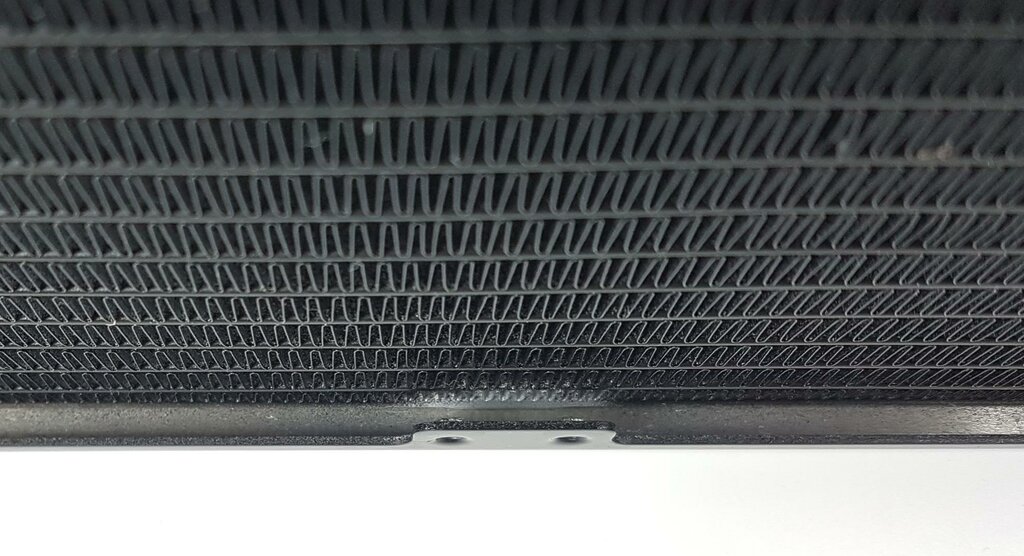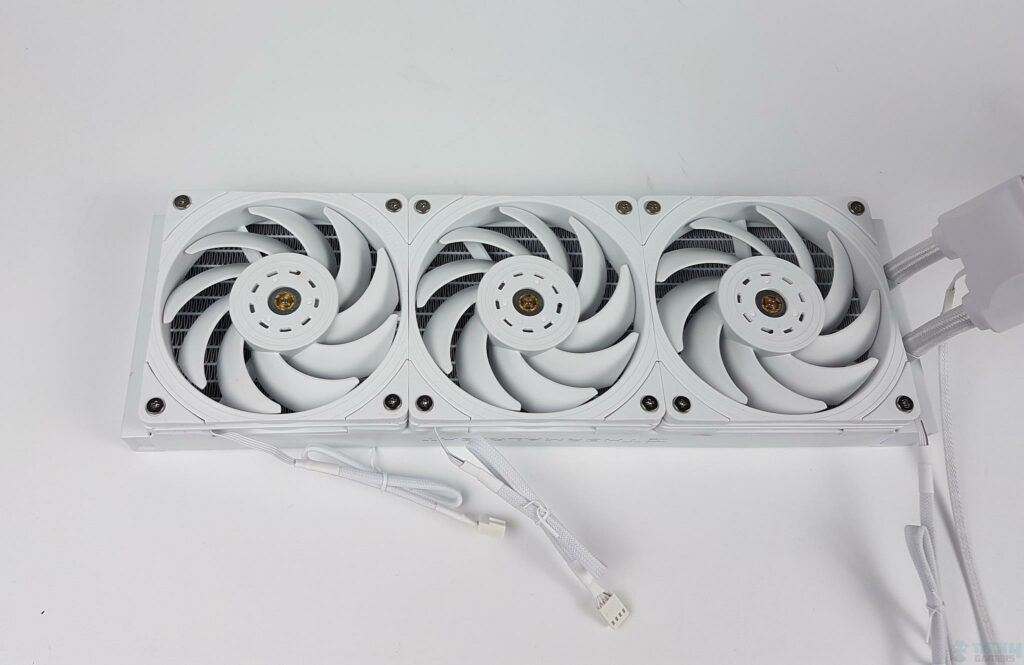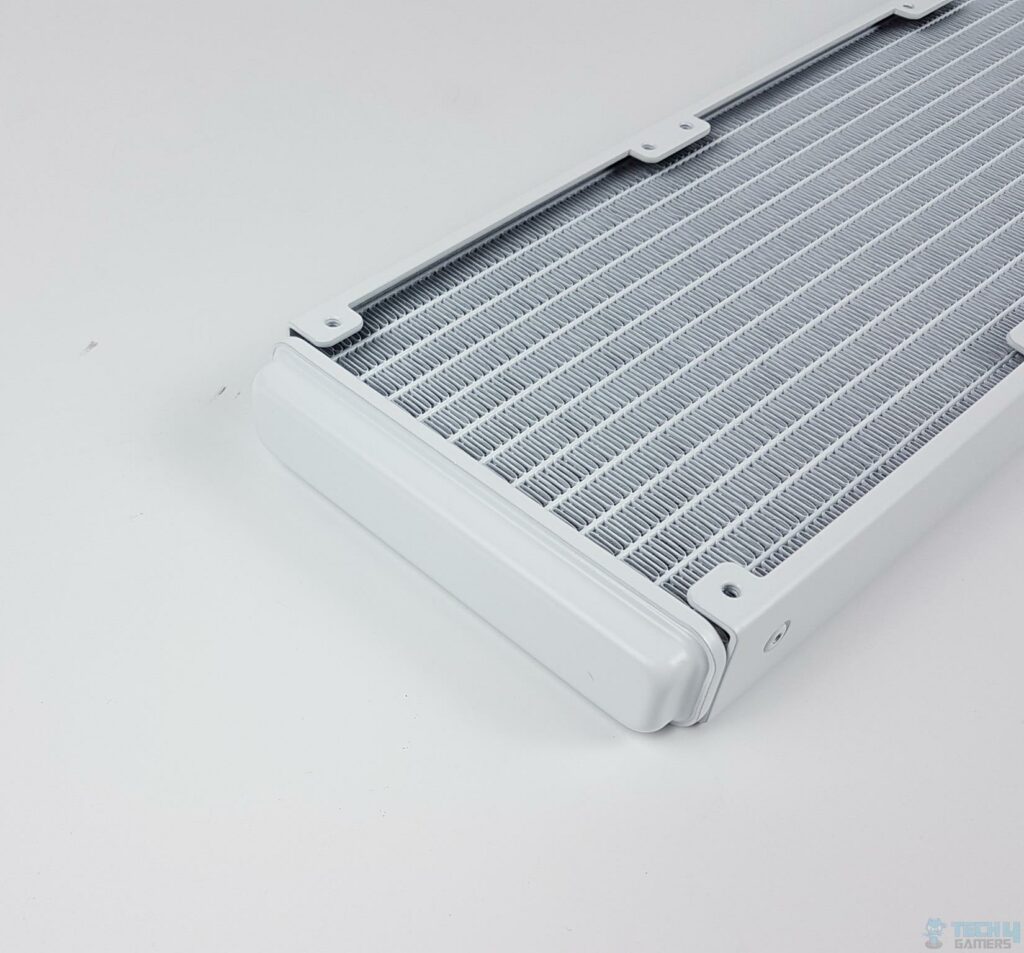A PC radiator is an important part of a liquid cooling setup. Other than the radiator size and material, FPI (Fins Per Inch) is also an important metric that tells about its performance. Therefore, it is crucial to know this widely used performance metric in radiators. In this article, I will take you through the radiator FPI and how it impacts the various factors.
Key Takeaways
- FPI, or Fins Per Inch, is the measure of how tightly packed metal fins are in a radiator.
- A radiator with a higher FPI value will need high static pressure fans to overcome the obstruction and vice versa.
- FPI value greatly impacts the heat dissipation ability, maximum cooling capacity, and fan compatibility of a radiator.
What Is Radiator FPI?

A radiator in a liquid cooling system is a component that helps dissipate heat generated by your PC’s CPU or GPU[1]. It works by transferring heat from the liquid coolant flowing through it to the surrounding air. The efficiency of this heat transfer depends on the design of the radiator, and that’s where FPI comes into play.
FPI stands for “Fins Per Inch,” and it tells you how tightly packed the tiny metal fins on the radiator are. These fins are like the thin metal plates or blades you see on the radiator’s surface. They are responsible for transferring heat from the liquid to the air through convection[2].
Relation Between FPI And Airflow

It is crucial to establish a good balance between radiator FPI and airflow through the radiator. There is no point in adding more fins to the radiator if your fan cannot get the air passed through it. Therefore, you need to have a thorough understanding of the relation between these two parameters.
Firstly, let’s talk about a radiator with a low FPI. In this case, the fins are spread out, meaning there are fewer fins in each inch of the radiator’s surface. This design allows for better airflow through the radiator because there’s more space between the fins. It’s like having wider gaps for air to pass through. Radiators with low FPI are often better suited for low static-pressure (or high airflow) fans because they don’t require as much air pressure to push air through the radiator[3].
On the other hand, a radiator with a high FPI has more fins packed closely together in each inch of the surface. This design provides a larger surface area for heat transfer[4] but also means that air has a harder time passing through the radiator because of the narrow gaps between the fins. Radiators with high FPI are typically paired with high static-pressure (or low airflow) fans that can push air through the dense fin structure more effectively[1].
Why Is FPI Important?
Fins Per Inch (FPI) is important in PC liquid cooling systems because it directly influences the radiator’s ability to dissipate heat effectively. For several reasons, it is crucial to pick a suitable radiator FPI. Some of these reasons are listed below:
- Heat Dissipation And Cooling Capacity: A higher FPI means more fins are in contact with the liquid, allowing for greater heat dissipation due to the increased surface area[4]. This makes them suitable for cooling powerful CPUs or GPUs that generate a lot of heat[5]. Conversely, a lower FPI allows for more airflow but may not dissipate heat as effectively.
- Fan Compatibility: Radiators with high FPI tend to work best with high static-pressure fans that can push air through the dense fin structure efficiently[1]. In contrast, radiators with low FPI are more compatible with quieter, low static-pressure fans that don’t require as much force to move air through the wider fin gaps.
- System Noise: The choice of FPI can impact the noise levels of your PC. Radiators with low FPI and larger fin gaps tend to be quieter when paired with suitable fans, as they don’t require the fans to run at high speeds to maintain adequate airflow. Radiators with high FPI may require faster, potentially noisier fans to maintain cooling performance.
- Space Constraints: The available space in your PC case can also influence your choice of FPI. Radiators with high FPI often require more space because they are thicker due to the densely packed fins. If your PC case has limited space, a radiator with a lower FPI might be a more practical choice.
What Is A Good Radiator FPI?

The ideal radiator FPI value depends on your specific PC cooling needs and components. There is no one-line answer, but I can provide some general guidance to help you choose a suitable FPI for your liquid cooling setup:
Low FPI (≤ 12 FPI): Radiators with low FPI values are typically considered good for setups where quiet operation is a priority. These radiators have wider fin gaps, allowing for easier airflow. They work well with quieter fans that have lower static pressure[3]. Low FPI radiators are suitable for systems with moderate heat loads, such as gaming PCs with standard CPUs and GPUs.
Medium FPI (13-20 FPI): This range offers a balanced compromise between cooling performance and noise levels. Radiators with medium FPI values are versatile and can handle a wide range of cooling requirements. They work well for both air-cooled and liquid-cooled systems, striking a balance between efficient heat dissipation and acceptable noise levels.
High FPI (≥ 21 FPI): Radiators with high FPI values are designed for high-performance cooling setups[5]. They have densely packed fins, which provide excellent heat dissipation but require fans with high static pressure to push air through the tight fin structure. High FPI radiators are suitable for overclocked CPUs, multiple GPUs, or any configuration with a substantial heat output.
Related Helpful Resources By Tech4Gamers:
References:
-
EKWB. (2023, March 26). Radiators Part 1: Thickness and FPI. Retrieved from https://www.ekwb.com/blog/radiators-part-1-thickness-fpi/
- Engineer’s Edge. (N.D). Convective Heat Transfer Equation. Retrieved from: https://www.engineersedge.com/heat_transfer/convection.htm
- EKWB. (2023, March 26). Radiators Part 2: Performance. Retrieved from: https://www.ekwb.com/blog/radiators-part-2-performance/
- Ali Falavand J. & Mehdi Mosavi N. & Alireza B. (2013) Effects Of Fin Per Inch On Heat Transfer And Pressure Drop Of An Air Cooler With Circular And Hexagonal Fins. Retrieved from: https://www.researchgate.net/publication/287274673_Effects_of_fin_per_inch_on_heat_transfer_and_pressure_drop_of_an_air_cooler_with_circular_and_hexagonal_fins
- ANIL CAN T. & Ferit Y. & Cenk C. & Bengt S. (2016). Modeling The Impact Of Number Of Fin And Material On The Heat Sink Performance With CFD Analysis. Retrieved from: https://www.researchgate.net/publication/311875050_Modeling_the_impact_of_number_of_fin_and_material_on_the_heat_sink_performance_with_CFD_analysis
FAQs
Fins Per Inch (FPI) is a measure of how densely packed fins are in a radiator.
Yes, in general, a thicker radiator can provide better water-cooling performance because it offers more surface area for heat dissipation, allowing for more efficient cooling.
A radiator fin is a small metallic surface on which the heat transfer takes place.
Thank you! Please share your positive feedback. 🔋
How could we improve this post? Please Help us. 😔
[Wiki Editor]
Ali Rashid Khan is an avid gamer, hardware enthusiast, photographer, and devoted litterateur with a period of experience spanning more than 14 years. Sporting a specialization with regards to the latest tech in flagship phones, gaming laptops, and top-of-the-line PCs, Ali is known for consistently presenting the most detailed objective perspective on all types of gaming products, ranging from the Best Motherboards, CPU Coolers, RAM kits, GPUs, and PSUs amongst numerous other peripherals. When he’s not busy writing, you’ll find Ali meddling with mechanical keyboards, indulging in vehicular racing, or professionally competing worldwide with fellow mind-sport athletes in Scrabble at an international level. Currently speaking, Ali has completed his A-Level GCEs with plans to go into either Allopathic Medicine or Business Studies, or who knows, perhaps a full-time dedicated technological journalist.
Get In Touch: alirashid@tech4gamers.com


 Threads
Threads![CPU Cooler Heat Pipes [What, Why, & How]](https://tech4gamers.com/wp-content/uploads/2023/09/HOW-TO-9-218x150.jpg)
![How Much Is My PC Worth? [Valuation Guide]](https://tech4gamers.com/wp-content/uploads/2022/10/Error-Fixes7-218x150.jpg)
![How To Choose A CPU? [Things To Know]](https://tech4gamers.com/wp-content/uploads/2023/03/How-TO5-218x150.jpg)
![What Is A CPU Socket? [Explained]](https://tech4gamers.com/wp-content/uploads/2023/09/What-is-a-CPU-socket-218x150.jpg)
